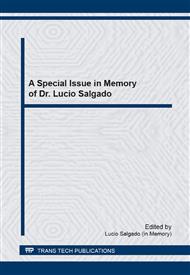p.513
p.519
p.525
p.530
p.536
p.541
p.547
p.553
p.558
Influence of the Dry Bulk Density on the Properties of Ceramic Paver Body
Abstract:
This work has as its objective to evaluate the influence of the dry bulk density in precursor body formulations developed to fabricate ceramic paver. Cylindrical specimens were uniaxial press-molded into two dry bulk density ranges, 1.99-2.05 g/cm3 and 2.18-2.23 g/cm3, from three formulations elaborated with clays, argillite and grog and then fired at 850 and 950oC. The evaluated properties were: water absorption and uniaxial compression strength. The results indicated that the packing during the forming stage is an important technological parameter that significantly influences the evaluated properties.
Info:
Periodical:
Pages:
536-540
Citation:
Online since:
September 2014
Keywords:
Price:
Сopyright:
© 2015 Trans Tech Publications Ltd. All Rights Reserved
Share:
Citation:


